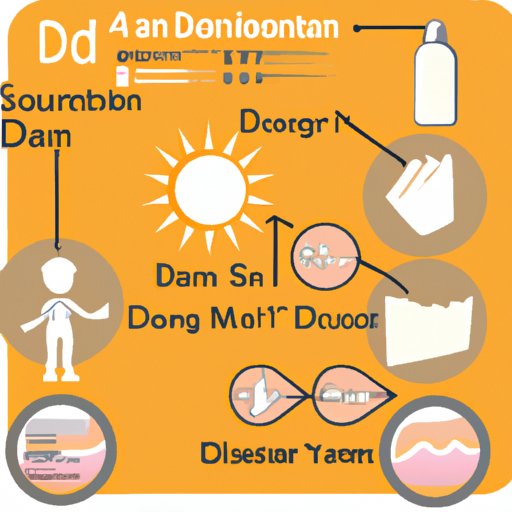Introduction
The skin is the largest organ of the human body, and it plays an essential role in our overall health and wellbeing. To understand why it’s so important, let’s take a closer look at what the skin actually is and the different functions it performs.
Definition of the Skin
The skin is a complex organ composed of several layers. It consists of three distinct parts: the epidermis, the dermis, and the hypodermis. The epidermis is the outermost layer, and it is composed of dead cells that are constantly being shed and replaced by new ones. The dermis lies beneath the epidermis, and it contains sweat and oil glands, nerve endings, and blood vessels. The hypodermis is the deepest layer and it is composed of fat, connective tissue, and large blood vessels.
Overview of the Functions of the Skin
The main functions of the skin include protection, regulation of body temperature, sensation, and production of vitamin D. It also helps to keep us healthy by controlling fluid balance, excreting toxins, and producing sebum. Let’s explore each of these functions in more detail.

Anatomy of the Skin: Exploring the Different Functions of the Skin
The epidermis is the outermost layer of the skin, and it serves as a barrier to protect the body from environmental factors such as bacteria, viruses, and chemicals. It also helps to retain moisture and prevent water loss from the body. The dermis is the layer below the epidermis, and it contains sweat and oil glands that help regulate body temperature and maintain healthy skin. The hypodermis is the deepest layer of the skin, and it contains fat, connective tissue, and large blood vessels.

A Closer Look at the Protective Role of the Skin
The skin is the body’s first line of defense against microorganisms, such as bacteria and viruses. It also helps protect the body from physical trauma, such as cuts and scrapes. Additionally, the skin helps to maintain the body’s internal environment by preventing water loss and regulating body temperature.
How the Skin Keeps Us Healthy
The skin plays an important role in keeping us healthy. It produces sebum, an oily substance that helps to keep the skin moisturized and prevents it from becoming dry and cracked. Additionally, the skin helps to excrete toxins from the body, which helps to maintain a healthy balance of fluids and electrolytes.
The Skin’s Multiple Roles in Regulating Body Temperature
The skin helps to maintain a constant body temperature by providing insulation from extreme temperatures. It also helps to cool down the body by releasing sweat when it gets too hot. Sweating helps to dissipate heat from the body, which helps to keep us cool.

The Skin as a Sensory Organ: Processing External Stimuli
The skin contains receptors for touch, pressure, pain, and temperature. These receptors allow the body to sense and respond to changes in its environment. For example, when we touch something, the receptors in the skin send signals to the brain which tell us whether the object is hot or cold.
The Skin’s Role in Vitamin D Production and Sun Protection
The skin helps to protect us from UV radiation by producing melanin, a pigment that absorbs UV light and helps to reduce the amount of radiation that reaches the deeper layers of the skin. The skin also helps to produce Vitamin D, which is essential for healthy bones and teeth.
Conclusion
The skin is a complex organ with many functions. It plays an important role in protecting the body from environmental factors, regulating body temperature, producing sebum, excreting toxins, processing external stimuli, and producing vitamin D. It is essential for maintaining good health and wellbeing.


